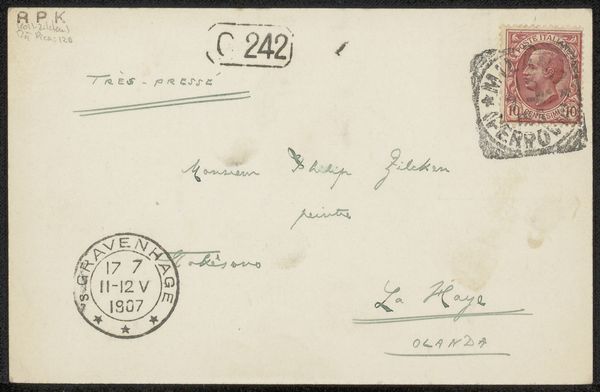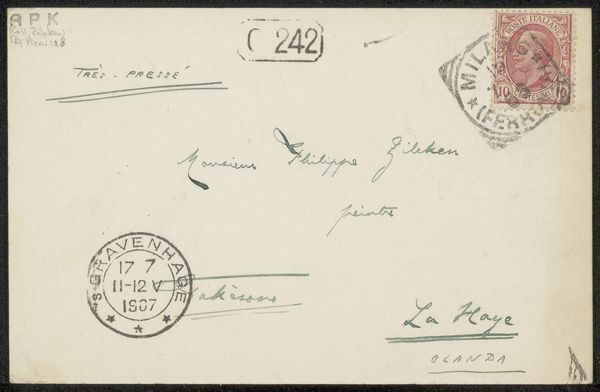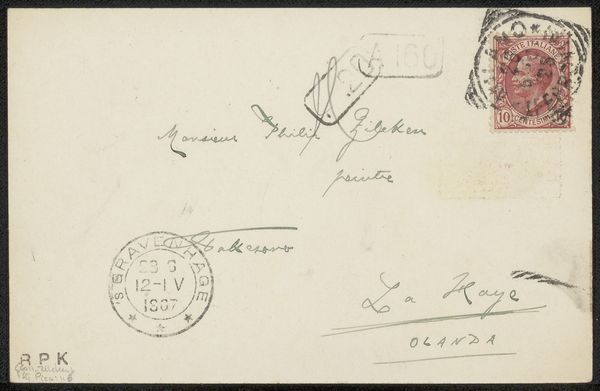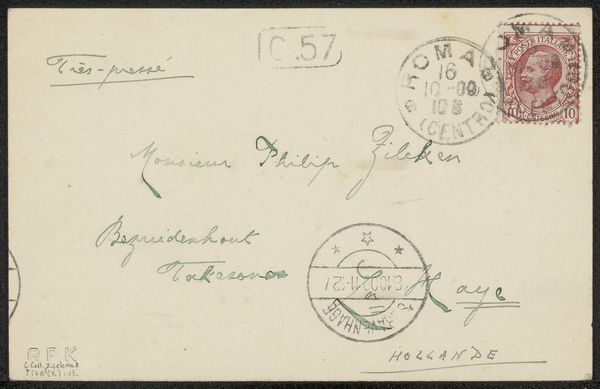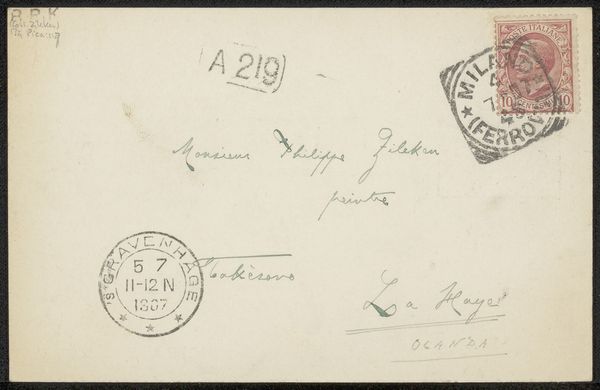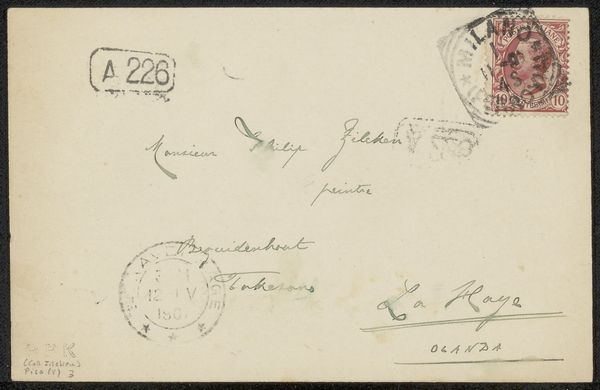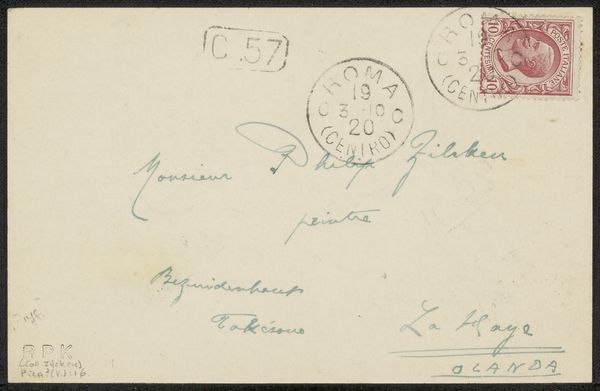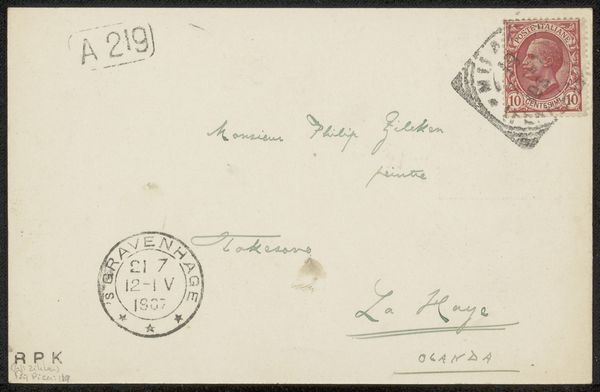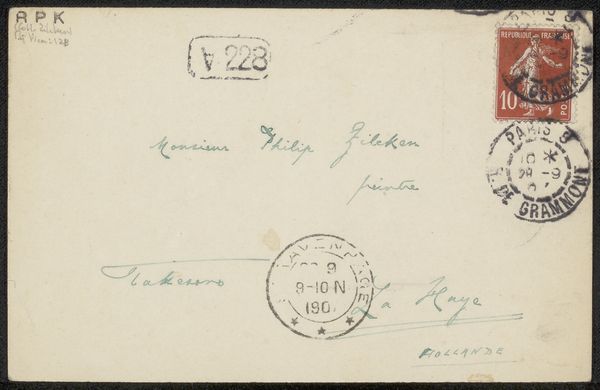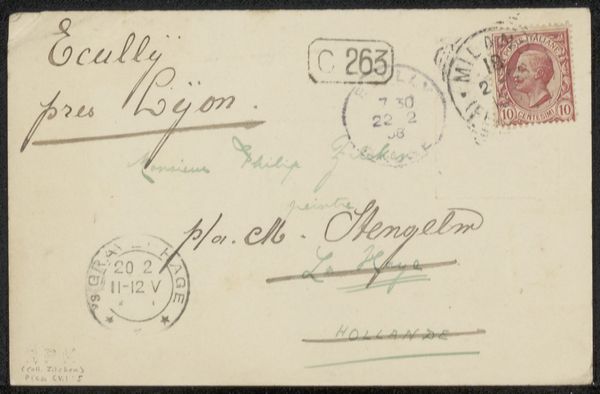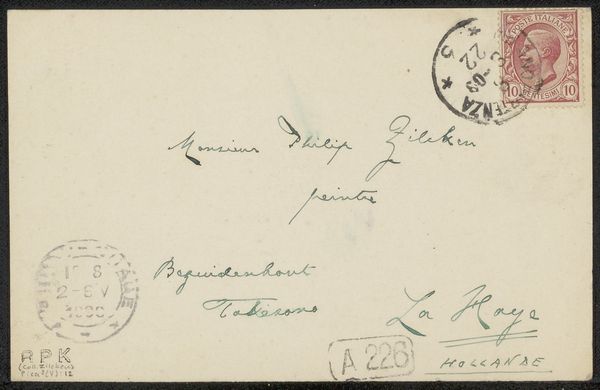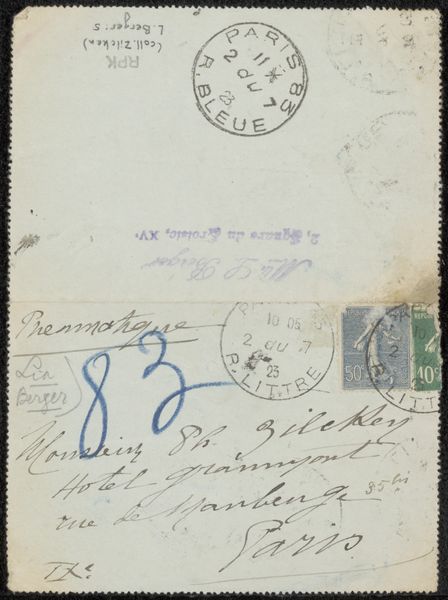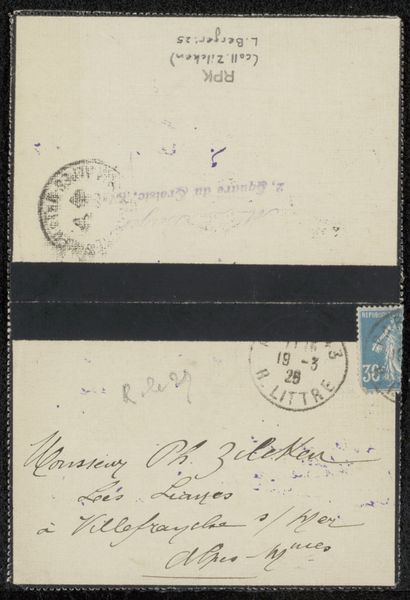
drawing, paper, ink, pen
#
portrait
#
drawing
#
art-nouveau
#
pen sketch
#
paper
#
ink
#
pen-ink sketch
#
pen
#
mail-art
Copyright: Rijks Museum: Open Domain
Curator: This piece is a letter, “Brief aan Philip Zilcken,” thought to have been created sometime between 1907 and 1911. It’s ink on paper, effectively a drawing functioning as mail art. Editor: The first thing that hits me is its utter fragility. It’s a whisper, a fragment—like holding someone’s memory in your hands. Curator: Indeed. Considering the postal system as its intended distribution network, one might ask how does such a personal artifact engage with a commercial system reliant on speed and standardization. Its intimacy is in sharp contrast to the depersonalization often characteristic of mass communication. Editor: Right, the handmade against the machine-made, the slow, intentional gesture against the rush of daily commerce. Look at that profile sketch in the upper left – it's so tentatively rendered. The address seems almost obscured by the wispy execution. It feels as if the sender wants to convey their message as a sort of secret to discover. Curator: Precisely. Even the ink itself suggests a modest form of production. Compare the cost of pigments and their distribution networks when evaluating the work’s potential reach versus, say, large-scale lithography from the same era. It prompts the question: what does accessibility truly mean for an artwork? Editor: You know, looking at the Belgian postage stamp, perfectly positioned there—it lends this fleeting moment, a private missive, a certain kind of gravity, or even immortality in a funny way. Isn't it ironic how something intended to be transient can become permanent within a museum context? Curator: Exactly. A letter transformed into a curated object reveals shifts in value production, disrupting the established hierarchy. It’s no longer about its immediate function but its newfound significance as a cultural artifact. The act of reception also undergoes a dramatic transformation from a private reader to an observing public. Editor: It’s poignant. Makes you think about the millions of everyday communications that are never archived, that vanish into time...and perhaps shouldn't. Still, I find something magical about this saved, whispered word to Philip Zilcken, an artist forever caught in this moment. Curator: I concur. By examining the letter's mode of production and considering its journey, we recognize the democratizing potential inherent to everyday artistic expression that can also question formal institutional roles. Editor: Agreed. In this little artifact, it feels like there's a whole story, a life.
Comments
No comments
Be the first to comment and join the conversation on the ultimate creative platform.
